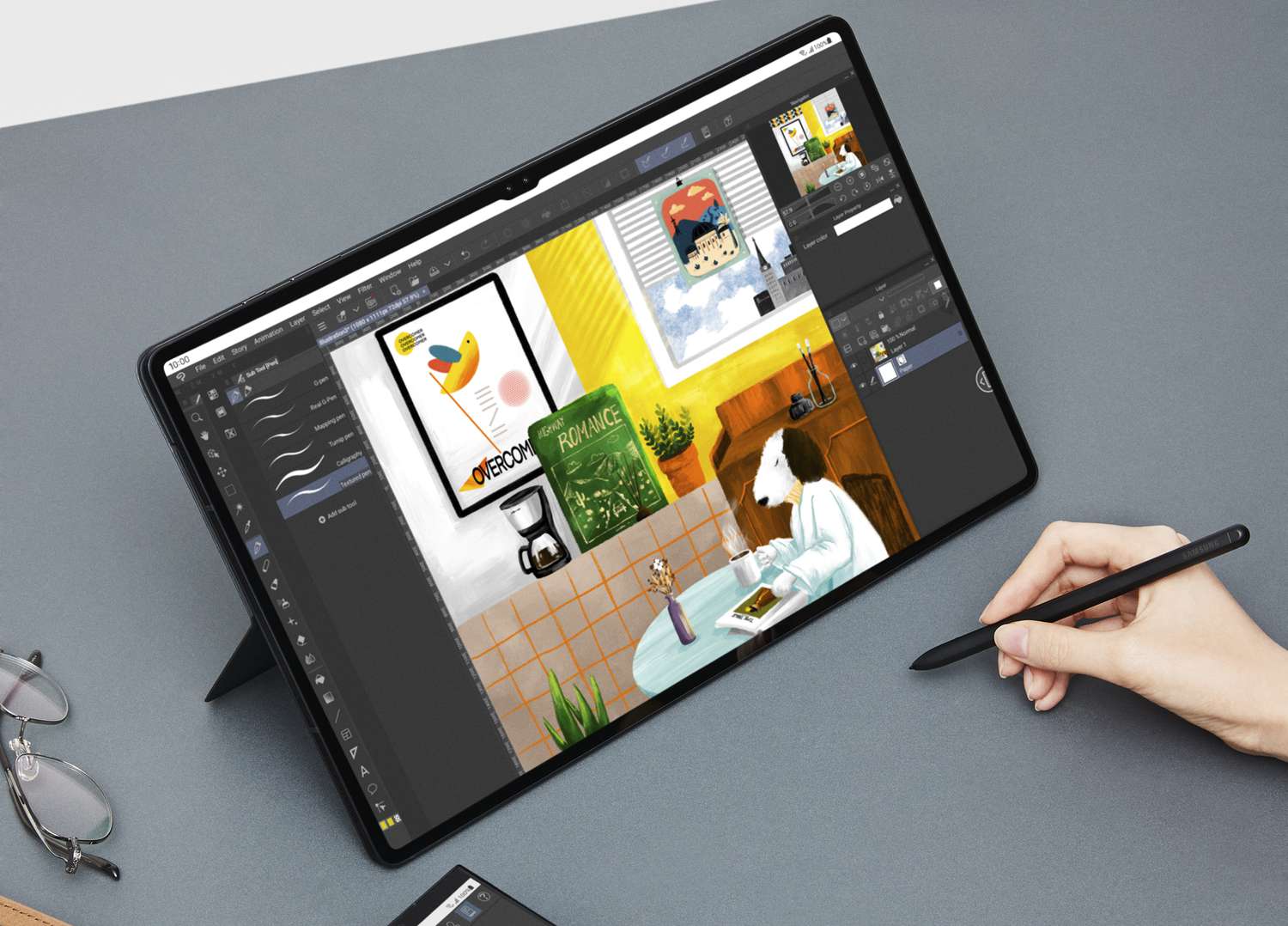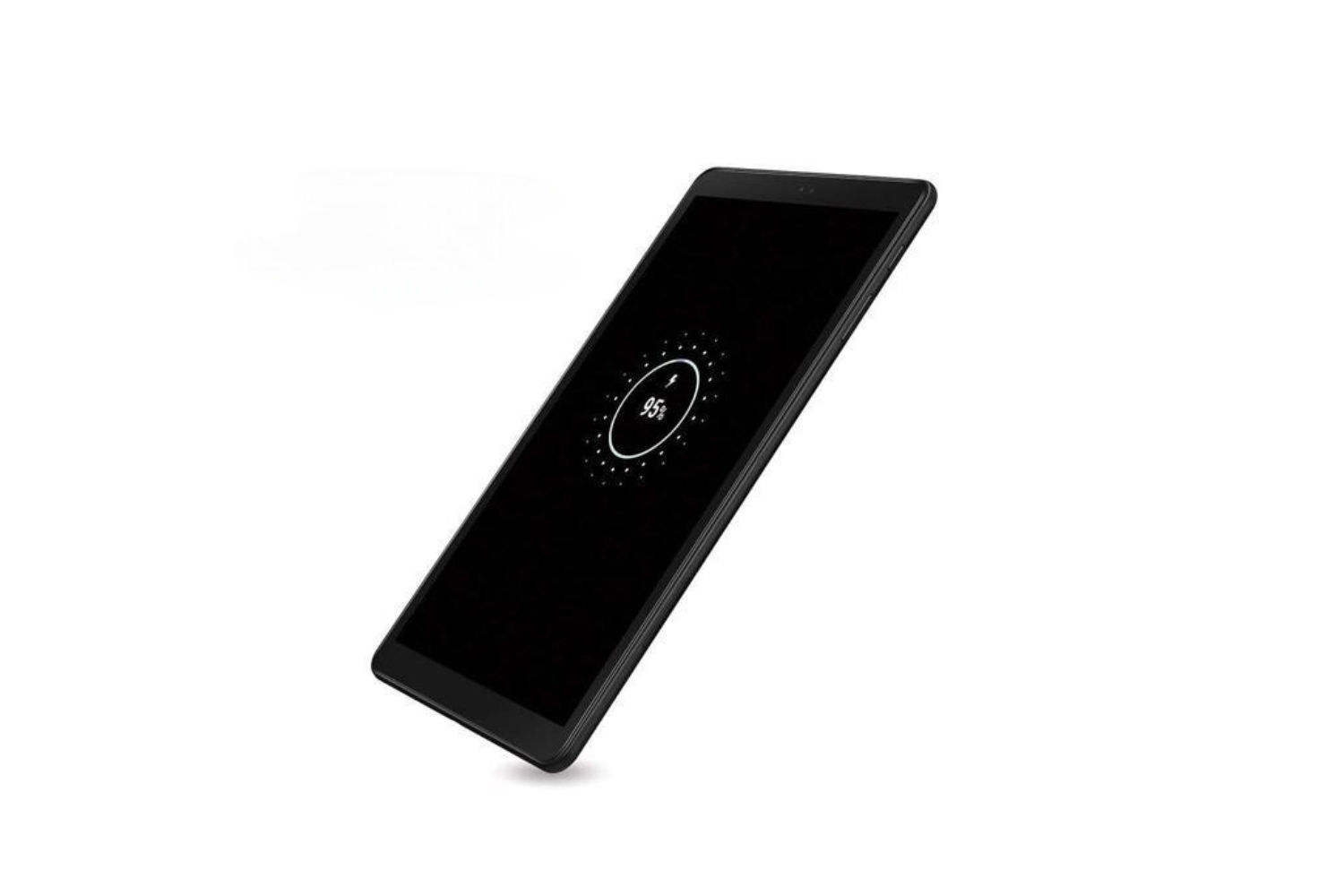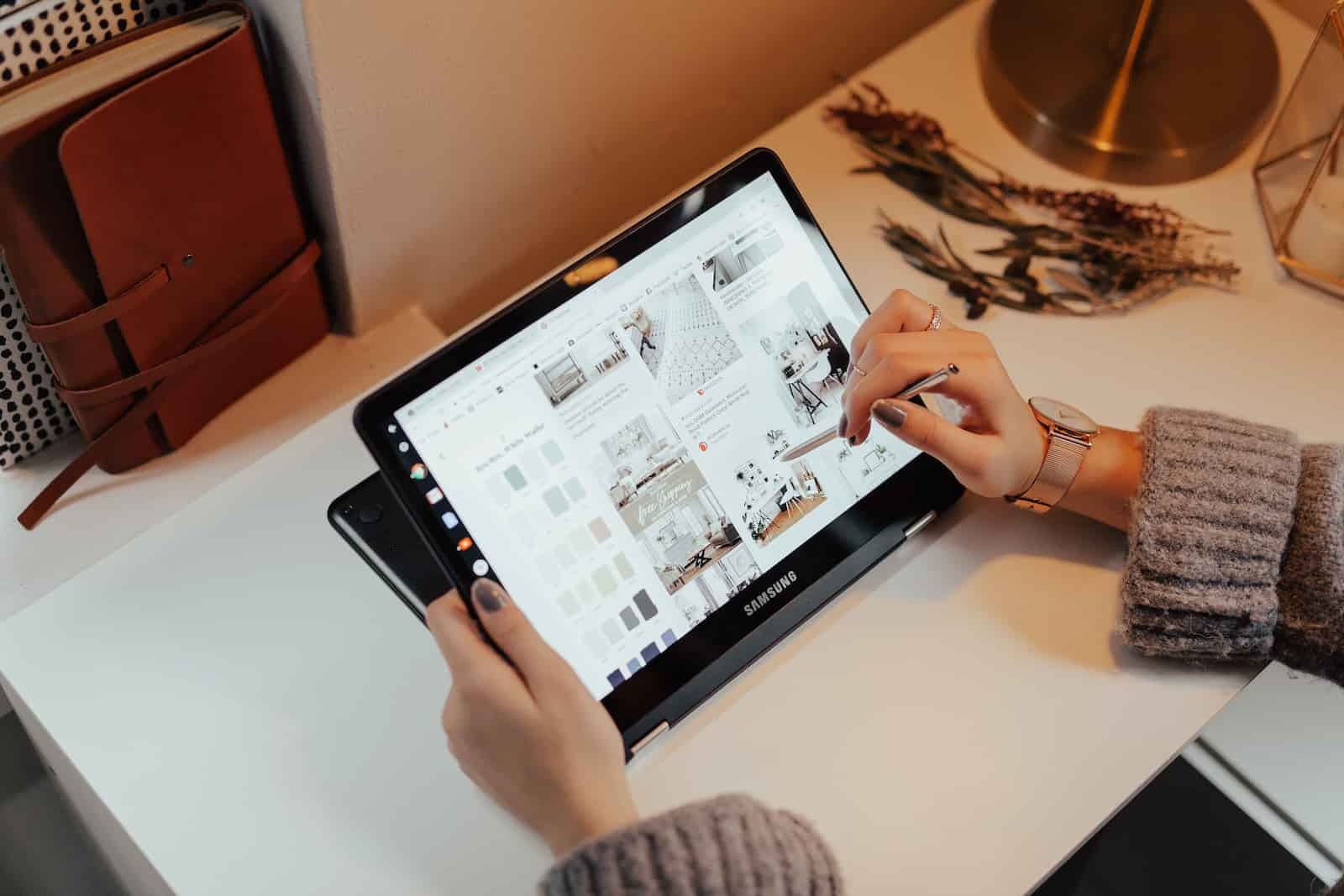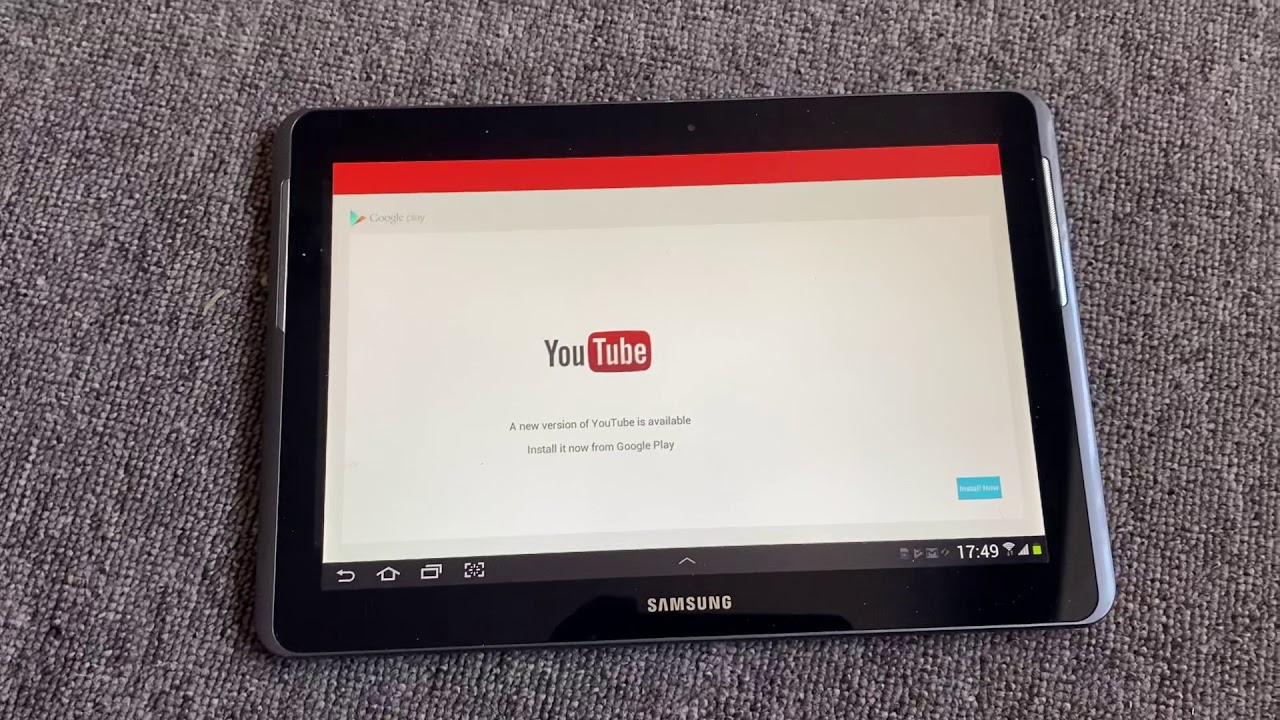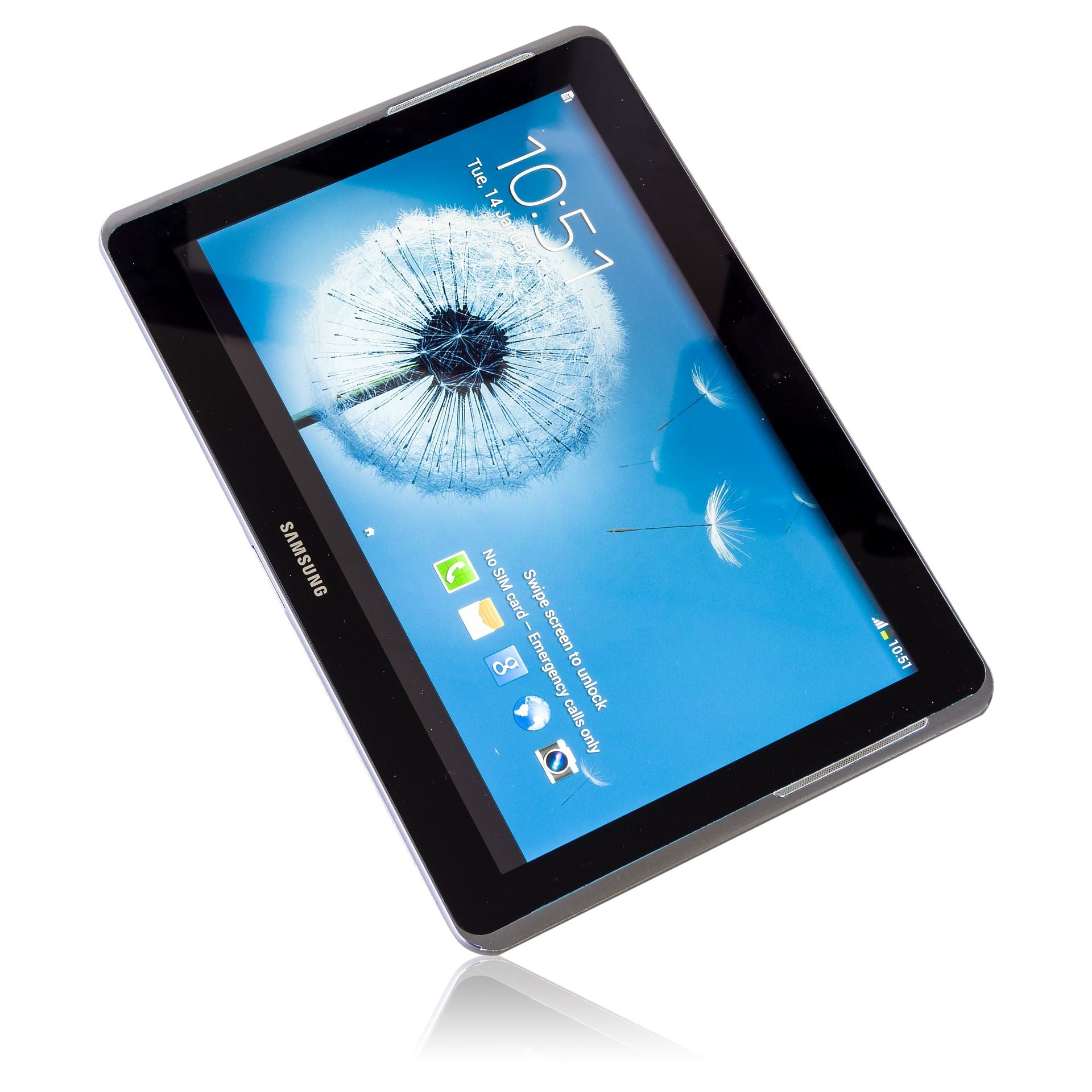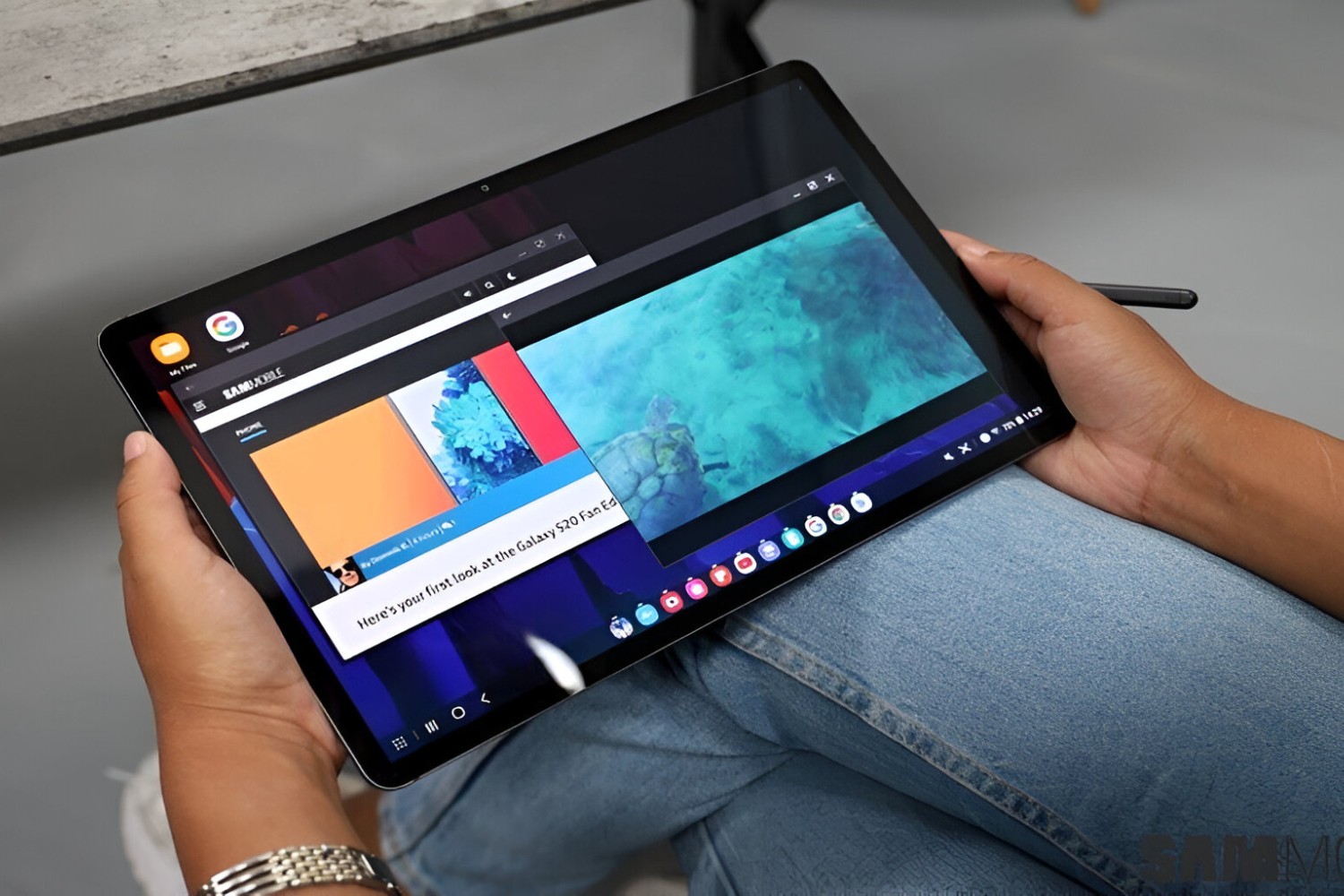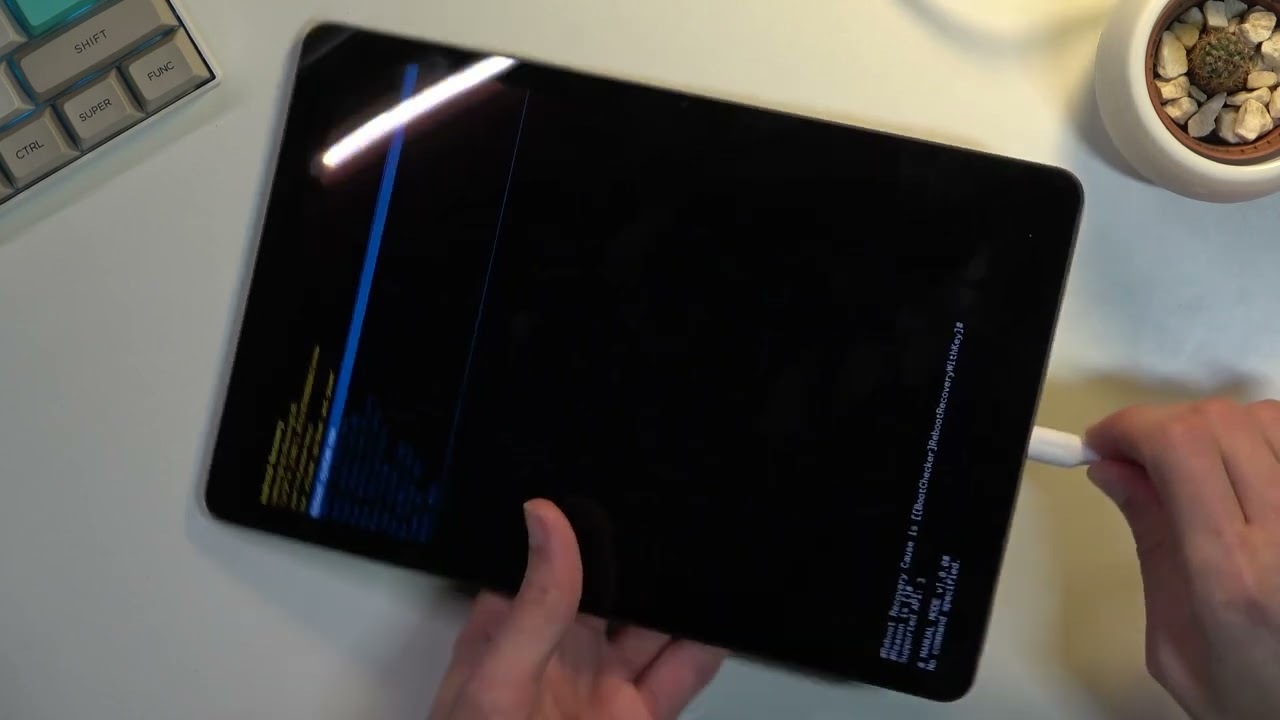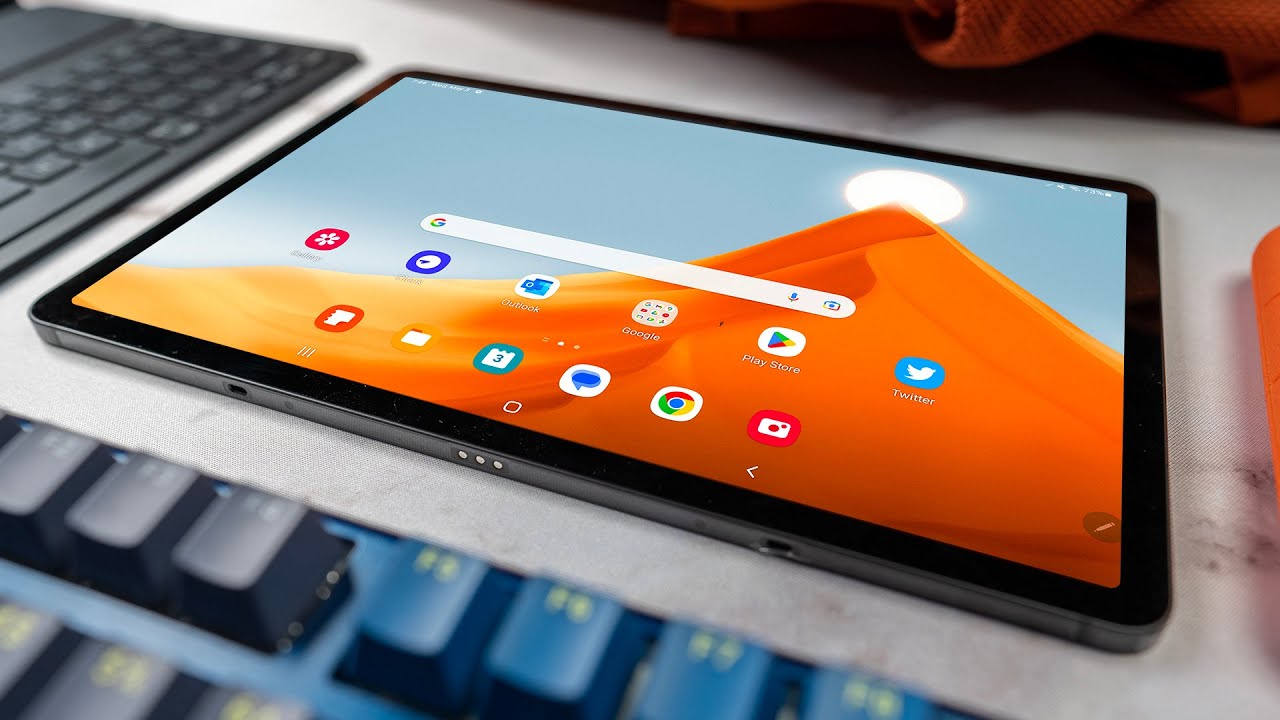Common Reasons for a Slow Samsung Tablet
Is your Samsung tablet suddenly running slower than usual? It can be frustrating when your device lags or takes longer to respond to your commands. Fortunately, there are several common reasons why a Samsung tablet may be experiencing slowdowns. By identifying these issues, you can take proactive steps to improve the performance of your device.
One of the most significant factors that can contribute to a slow Samsung tablet is insufficient storage space. When your device’s internal storage is almost full, it can slow down the overall performance. To resolve this issue, try deleting unnecessary files, such as old photos, videos, or apps that you no longer use. You can also transfer some of your data to an external storage device or utilize cloud storage services to free up space.
Another reason for a slow-running Samsung tablet is having too many apps running in the background. Running multiple apps simultaneously can consume your device’s memory and processing power, leading to sluggish performance. To address this, close any unnecessary apps running in the background by accessing the Recent Apps screen or using the task manager.
An outdated operating system can also impact the speed of your Samsung tablet. Manufacturers regularly release software updates that include performance enhancements and bug fixes. By keeping your device’s operating system up to date, you can ensure optimal performance and improved speed. Check for updates regularly and install them as soon as they become available.
Believe it or not, the antivirus or cleaning apps you have installed on your Samsung tablet could actually be slowing it down. While these apps are designed to improve device performance, some may consume significant system resources, causing performance issues. Consider disabling or uninstalling unnecessary antivirus or cleaning apps and rely on built-in security features provided by your device.
Cache files, which are temporary files stored by apps for quicker access, can accumulate over time and overcrowd your device’s storage. Clearing the cache regularly can help optimize your tablet’s performance. You can clear the cache for individual apps or use the device’s built-in storage settings to clear the cache for all apps at once.
Overheating can also contribute to a slow Samsung tablet. Excessive heat can affect the performance of the device and trigger thermal throttling, which reduces the processor speed to prevent damage. Avoid using your tablet in direct sunlight or hot environments and make sure it is not obstructed by cases or covers that could restrict airflow. If your tablet continues to overheat, consider seeking professional assistance.
In some cases, hardware issues can be the cause of a slow Samsung tablet. These issues can range from a faulty battery to a malfunctioning processor. If you suspect a hardware problem, it is recommended to contact Samsung’s customer support or visit an authorized service center for diagnosis and repair.
To sum up, a slow Samsung tablet can be a frustrating experience, but understanding the common reasons behind it can help you troubleshoot and improve its performance. By managing your storage space, closing unnecessary apps, keeping your operating system up to date, and being mindful of resource-intensive third-party apps, you can optimize the speed and responsiveness of your Samsung tablet.
Insufficient Storage Space
Insufficient storage space is one of the most common reasons for a slow Samsung tablet. When your device’s internal storage is nearly full, it can significantly impact its performance. This occurs because the operating system requires free space to cache data and run apps smoothly.
To resolve this issue, start by identifying and removing unnecessary files, such as old photos, videos, and documents. You can manually delete these files from your tablet’s storage or transfer them to an external storage device. Additionally, consider uninstalling apps that you no longer use or need. Removing these unused apps will not only free up storage space but also reduce the processing power needed to run them in the background.
If you find that your storage is still insufficient even after removing unwanted files and apps, you can take advantage of cloud storage services. Cloud storage allows you to store your files and data on remote servers, freeing up space on your tablet. Popular cloud storage options include Google Drive, Dropbox, and Microsoft OneDrive.
Another option to optimize your tablet’s storage space is to move some of your files and data to an external storage device, such as a microSD card. Samsung tablets typically have a microSD card slot, which allows you to expand the storage capacity. By transferring files, such as photos, videos, and documents, to the microSD card, you can create more space on your tablet’s internal storage.
It’s important to note that clearing up storage space isn’t a one-time solution. Regularly check your tablet for files and apps that you no longer need and remove them accordingly. By managing your storage space efficiently, you can maintain optimal performance and prevent your tablet from slowing down due to insufficient storage.
In addition to managing your storage space, consider using storage optimization features provided by your Samsung tablet. Some devices have built-in options that can automatically identify and delete temporary files, cache, and other unnecessary data. These features can help you keep your storage space organized and prevent it from becoming overloaded.
To sum up, insufficient storage space can lead to a slow Samsung tablet. By regularly managing your files, deleting unnecessary apps, utilizing cloud storage services, and expanding storage capacity with a microSD card, you can ensure that your tablet performs at its best. Keep an eye on your storage space and take action to optimize it whenever needed.
Too Many Running Apps
One common reason for a slow Samsung tablet is having too many apps running simultaneously in the background. Every app consumes system resources, including memory and processing power. When multiple apps are running simultaneously, it can overload the device’s resources, leading to sluggish performance.
To address this issue, it’s important to regularly close or disable any unnecessary apps running in the background. By doing so, you can free up system resources and allocate them to the apps you actively use.
There are two main methods to close apps on a Samsung tablet. The first is by accessing the Recent Apps screen. On most Samsung models, you can access this screen by tapping the Recent Apps button or swiping up from the bottom of the screen and pausing. Once you’re in the Recent Apps screen, swipe left or right to find the app you want to close, then swipe it off the screen or tap the “Close” button.
The second method involves using the task manager. On Samsung tablets, you can access the task manager by long-pressing the Recent Apps button or by tapping the task manager icon, which is usually located at the bottom of the screen in the navigation bar. In the task manager, you’ll see a list of currently running apps. To close an app, simply swipe it off the screen or tap the “End” button.
In addition to manually closing apps, you can also enable developer options on your Samsung tablet to limit background processes. To do this, go to the device’s settings, then tap on “About phone” or “About tablet.” Scroll down and locate the “Build number” entry. Tap on it several times until a message appears indicating that developer options have been enabled. Now, go back to the main settings screen, find and tap on “Developer options.” Look for the option called “Limit background processes” and select either “Standard limit” or “No background processes” to restrict the number of running apps in the background.
Regularly monitoring and closing unnecessary background apps will help improve the performance of your Samsung tablet. By doing so, you’ll have more available memory and processing power for the apps you actively use, leading to a smoother and faster experience.
Outdated Operating System
Running an outdated operating system is a common reason for a slow Samsung tablet. Manufacturers release regular software updates that include bug fixes, security patches, and performance enhancements. When you fail to update your device’s operating system, you may experience slower performance and compatibility issues with newer apps.
To ensure optimal performance of your Samsung tablet, it’s important to keep the operating system up to date. Here’s how you can update your device:
1. Go to the Settings app on your tablet. Look for the “Software Update” or “System Updates” option. The exact wording may vary depending on your device model and operating system version.
2. Tap on the “Software Update” option to check for any available updates for your device. Your tablet will connect to the server to download and install the latest updates if they are available.
3. If an update is available, follow the on-screen instructions to download and install it. Make sure your tablet is connected to a stable Wi-Fi network and has sufficient battery charge or is plugged into a power source.
4. Once the update is installed, your tablet may require a restart to complete the process. Ensure all your important files and data are saved before proceeding with the restart.
If you are unable to find the “Software Update” option in your tablet’s settings or if there are no new updates available, it’s possible that your device has reached the end of its software support by the manufacturer. In this case, you may need to consider upgrading to a newer tablet model to take advantage of the latest features and performance improvements.
By keeping your Samsung tablet’s operating system up to date, you can benefit from improved performance, enhanced security, and compatibility with the latest apps and features. Regularly check for updates and install them as soon as they become available to ensure your tablet is running on the latest version of the operating system.
Antivirus or Cleaning Apps
While antivirus and cleaning apps are intended to optimize device performance and protect against malware, they can sometimes contribute to a slow Samsung tablet. These apps typically run in the background, consuming system resources such as CPU power, memory, and battery life.
If you suspect that your antivirus or cleaning app is responsible for slowing down your tablet, consider the following:
1. Evaluate the necessity: Assess whether you genuinely need an antivirus or cleaning app on your Samsung tablet. Modern Android operating systems have built-in security features that can effectively protect your device from malware and other threats. Removing unnecessary third-party security apps can help alleviate the strain on system resources.
2. Disable background processes: Some antivirus or cleaning apps can continue to run in the background even when not actively used. Check the app’s settings to disable any unnecessary background processes or functions that might be impacting your tablet’s performance.
3. Uninstall unnecessary apps: Over time, we may accumulate multiple antivirus or cleaning apps with overlapping functions. Having several of these apps running simultaneously can lead to resource conflicts and slow your tablet down. Uninstall any redundant or unnecessary apps to free up system resources.
4. Use built-in security features: Instead of relying on third-party antivirus apps, leverage the built-in security features provided by your Samsung tablet. These features, such as Google Play Protect, can effectively scan and protect your device from malware without consuming excessive system resources.
5. Optimize app settings: Some antivirus or cleaning apps offer customization options to optimize their performance. Explore the settings of the app and disable any features that are not essential or that might be causing your tablet to slow down.
It is important to note that not all antivirus or cleaning apps will have a significant impact on your tablet’s performance. Assess the specific app or apps installed on your device and evaluate their performance impact by monitoring system resource usage and tablet performance before making any decisions.
If you do decide to uninstall an antivirus or cleaning app, ensure that you have an alternative security solution in place to protect your Samsung tablet from malware. Utilize the built-in security features, keep your operating system up to date, and practice safe browsing habits to mitigate security risks.
By managing and optimizing your use of antivirus and cleaning apps, you can help improve the overall performance of your Samsung tablet and maintain a smooth user experience.
Full Cache
A full cache can be a significant factor in slowing down your Samsung tablet’s performance. Caches are temporary files stored by apps to provide quicker access to certain data or resources. However, over time, these cache files can accumulate and take up valuable storage space, impacting the performance and responsiveness of your device.
To address a full cache on your Samsung tablet, follow the steps below:
1. Clear app cache individually: You can manually clear the cache for specific apps on your tablet. Go to the Settings app, find the “Apps” or “Applications” section, and select the app you want to clear the cache for. Within the app’s settings, look for the “Storage” or “Memory” option and tap on it. From there, you should see the option to clear the app’s cache. Repeat this process for other apps that may have accumulated a large cache.
2. Clear cache for all apps: If you prefer to clear the cache for all apps at once, you can find this option within the settings of your Samsung tablet. Go to the Settings app, find the “Storage” or “Device Care” section, and look for the option to clear cache. Depending on your device model and operating system version, this option may be labeled differently. Tap on it to initiate the cache clearing process, which may take a few moments to complete.
3. Use a cache-cleaning app: Alternatively, you can use a cache-cleaning app from the Play Store to automatically clear the cache for all apps on your Samsung tablet. These apps can help streamline the cache-clearing process and ensure that your device’s cache is regularly cleaned. However, be cautious when choosing a cache-cleaning app and ensure that it comes from a reputable developer.
Regularly clearing the cache on your Samsung tablet is important for maintaining optimal performance. By doing so, you can free up storage space, improve app loading times, and reduce the chances of encountering app crashes or errors due to cache-related issues.
It’s important to note that clearing the cache does not delete any personal data or app settings. It simply removes the temporary files that can accumulate over time. However, certain apps may require you to log back in or re-download certain data after clearing the cache, so be prepared for that possibility.
By regularly clearing the cache for individual apps or using the cache-clearing feature on your Samsung tablet, you can keep your device running smoothly and ensure that it remains responsive.
Overheating
Overheating can be a common cause for a slow Samsung tablet. Excessive heat can impact the device’s performance and trigger thermal throttling, a protective measure used to prevent damage. When the tablet overheats, the processor slows down to reduce heat generation, leading to a noticeable decrease in performance.
There are several factors that can contribute to overheating:
1. Environmental factors: Using your Samsung tablet in direct sunlight or exposing it to high temperatures can cause it to overheat. Similarly, keeping the tablet in a closed, poorly ventilated space can hinder proper airflow, leading to increased heat accumulation.
2. Heavy app usage or multitasking: Running resource-intensive apps or multitasking extensively can put a considerable load on the processor, causing it to generate more heat. This can lead to increased temperatures and potential performance degradation.
To prevent overheating and improve the performance of your Samsung tablet, consider the following steps:
1. Limit exposure to heat: Avoid using your tablet in direct sunlight or hot environments. If you’re using the tablet outdoors, try to find shade or use a sunshade to protect it from direct sunlight. Additionally, refrain from keeping the tablet near heat sources, such as radiators or vents.
2. Remove protective cases or covers: Some tablet cases or covers can trap heat and hinder proper airflow, leading to increased temperatures. Removing such accessories can help dissipate heat more effectively and prevent overheating.
3. Close unnecessary apps and limit multitasking: Closing any unnecessary apps running in the background and limiting multitasking can reduce the workload on the processor, thereby minimizing heat generation. Use the Recent Apps screen or the task manager to close unnecessary apps and focus on running only those apps that you actively use.
4. Restart your tablet: If you notice that your tablet is running hot, a simple restart can help in some cases. Restarting the tablet can terminate any background processes that might be contributing to the heat buildup, allowing your device to cool down and potentially improving performance.
5. Avoid resource-intensive tasks: Performing tasks that require a significant amount of processing power, such as gaming or watching high-definition videos for extended periods, can generate heat. Consider taking breaks between intensive tasks to allow your tablet to cool down and prevent overheating.
If your Samsung tablet continues to overheat despite taking the above precautions or if you experience other symptoms like sudden shutdowns, it may be indicative of a more serious hardware issue. In such cases, it is recommended to seek professional assistance from Samsung’s customer support or visit an authorized service center.
By being mindful of your tablet’s temperature and adopting preventive measures, you can mitigate the risk of overheating and ensure optimal performance and longevity for your Samsung tablet.
Hardware Issues
Hardware issues can also be a significant cause of a slow Samsung tablet. Despite being well-designed and manufactured, tablets can experience problems that affect their performance. These issues can range from faulty components to physical damage. It is important to identify and address hardware issues to restore the tablet’s optimal performance.
There are several hardware issues that can impact the speed and responsiveness of a Samsung tablet:
1. Battery problems: A weak or faulty battery can cause a tablet to slow down. If your tablet takes longer to charge, drains quickly, or experiences sudden shutdowns, it may be a sign of a battery issue that needs to be addressed. Consider seeking assistance from Samsung’s customer support or visiting an authorized service center to have your battery checked and replaced if necessary.
2. Storage drive problems: Tablets rely on storage drives to store and retrieve data. If the storage drive is damaged or experiencing issues, it can lead to slow performance, data corruption, or even system crashes. Running diagnostic tests or contacting a professional technician can help identify and resolve storage drive problems.
3. Overheating: While overheating was already discussed as a separate section, it is important to note that chronic overheating can also be a symptom of underlying hardware issues. For example, a malfunctioning cooling system or faulty thermals can cause a tablet to overheat more frequently, leading to performance degradation. In such cases, seeking professional assistance is recommended.
4. Malfunctioning hardware components: Tablets consist of various components, including the processor, RAM, and motherboard. If any of these components are faulty or not functioning correctly, it can result in slow or inconsistent performance. Professional diagnosis and repair may be required to identify and replace the malfunctioning hardware.
5. Physical damage: Accidental drops, impacts, or exposure to liquids can cause physical damage to a tablet. This damage can affect the internal components, leading to decreased performance or even complete failure. If you suspect physical damage as the cause of your tablet’s sluggishness, it is advisable to consult with a professional technician for a thorough inspection and repair.
If you experience persistent performance issues with your Samsung tablet that cannot be resolved through software optimization or basic troubleshooting, it is essential to reach out to the manufacturer’s support or visit an authorized service center. Professionals will be able to diagnose and address any hardware-related problems to restore your tablet’s performance.
Remember, attempting to repair hardware issues yourself may void your warranty or further damage your tablet. Seek assistance from professionals who are experienced with Samsung tablets and have access to genuine spare parts.
By taking timely action to address hardware issues, you can ensure that your Samsung tablet remains in optimal working condition and continues to deliver the performance you expect.
Tips to Speed Up Your Samsung Tablet
If you want to improve the speed and performance of your Samsung tablet, there are several tips and tricks you can follow. By implementing these strategies, you can enhance the overall user experience and enjoy smooth and responsive performance on your device.
1. Update your apps and operating system: Keeping your apps and operating system up to date is crucial for optimal performance. Developers release updates to address bugs, introduce new features, and improve performance. Regularly check for updates in the Google Play Store or your device’s settings and install them as they become available.
2. Remove unnecessary apps and bloatware: Over time, you may accumulate a lot of apps on your tablet that you no longer use. Uninstalling these apps can free up storage space and reduce the strain on your device’s resources. Additionally, consider disabling or uninstalling pre-installed bloatware, which are apps that come preloaded on the device and are often unnecessary for most users.
3. Restart your tablet regularly: Restarting your tablet can help clear temporary files and refresh the system. It can also shut down any background processes that may be consuming system resources. Restarting your tablet on a regular basis, especially if you notice a decrease in performance, can help improve its speed and responsiveness.
4. Utilize storage optimization features: Samsung tablets often come with built-in storage optimization features. These features can automatically identify and clean up unnecessary files, cache, and temporary data. Enable and use these features to keep your tablet’s storage organized and free up space for better performance.
5. Mindful use of widgets and live wallpapers: While widgets and live wallpapers can enhance the visual appeal of your tablet, they can also consume system resources and impact performance. Avoid using too many widgets or resource-intensive live wallpapers, as they can slow down your device. Consider using static wallpapers and only keep the essential widgets that you frequently use.
6. Clear cache regularly: Clearing the cache of individual apps, as well as the system cache, can help improve the performance of your Samsung tablet. Follow the steps mentioned earlier to clear app cache individually or use the built-in cache clearing option in your tablet’s settings. Regularly clearing the cache can free up storage space and enhance the speed and responsiveness of your tablet.
7. Disable or limit animations: While visual animations can be appealing, they can also contribute to a slower user interface. Disabling or limiting animations in the developer options of your tablet’s settings can help speed up transitions and make navigation feel snappier. However, keep in mind that this setting may differ based on your tablet model and operating system version.
8. Keep your tablet cool: Overheating can lead to performance issues. Avoid using your tablet in direct sunlight or hot environments, and ensure it has proper ventilation. Remove any cases or covers that may trap heat and obstruct airflow. Keeping your tablet cool can help prevent thermal throttling and maintain optimal performance.
Implementing these tips and tricks can significantly improve the speed and performance of your Samsung tablet. However, it’s important to note that individual results may vary depending on factors such as the model, specifications, and overall condition of your device. Regular maintenance, updates, and mindful usage will help ensure a smoother and faster experience with your Samsung tablet.







